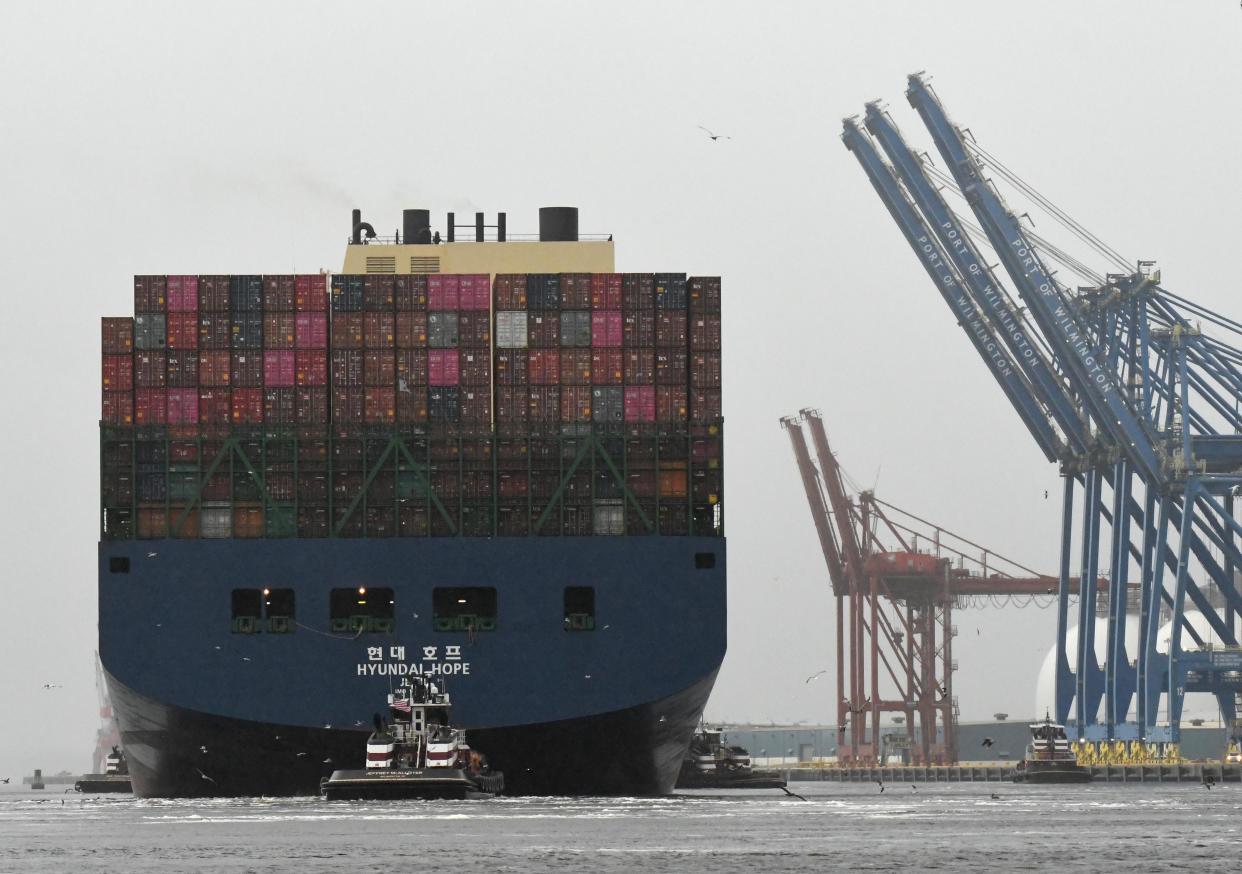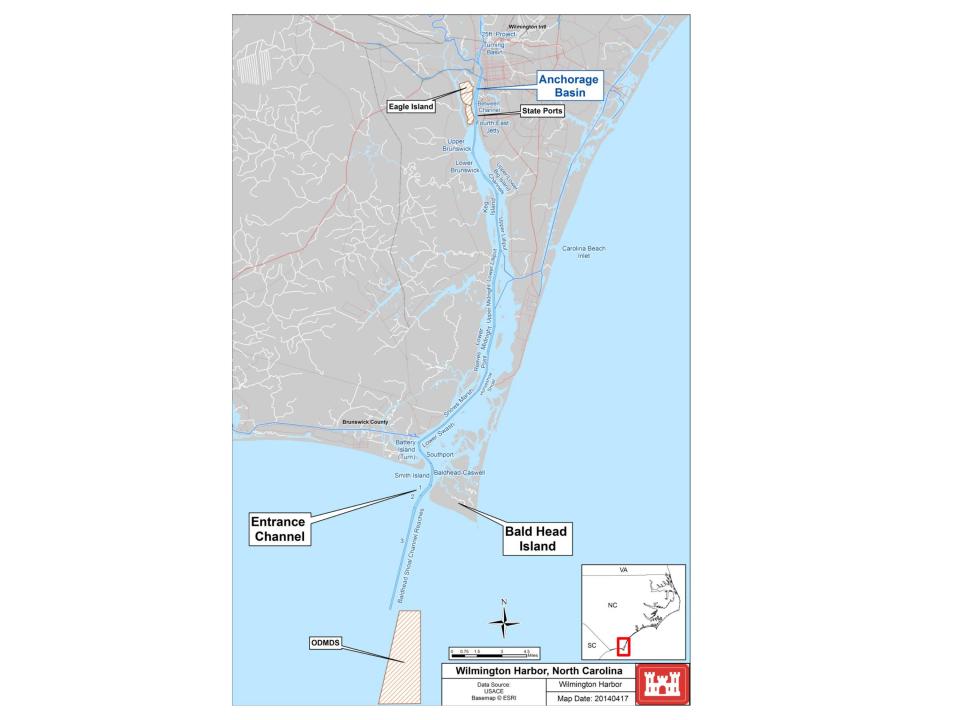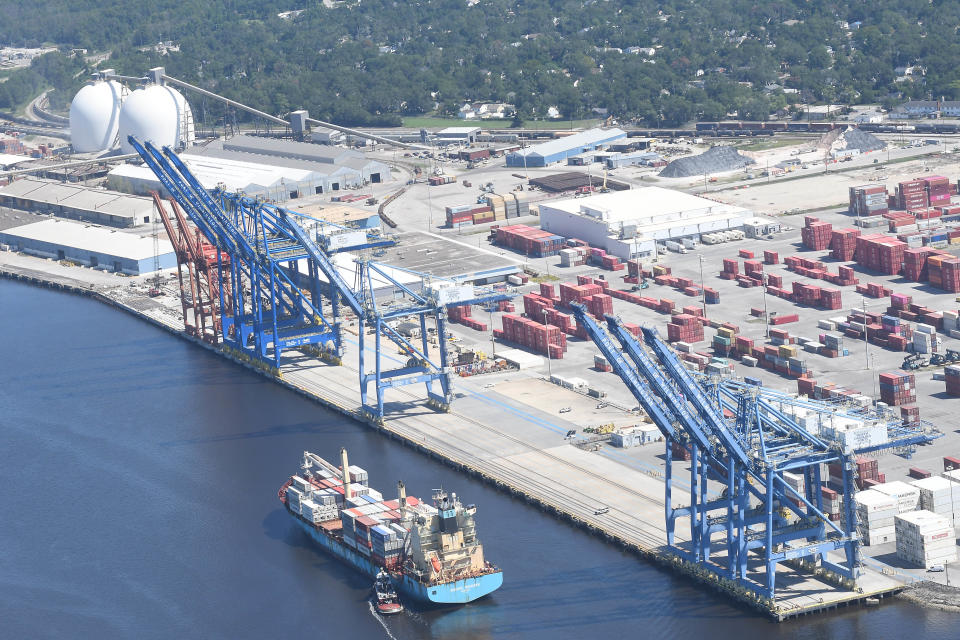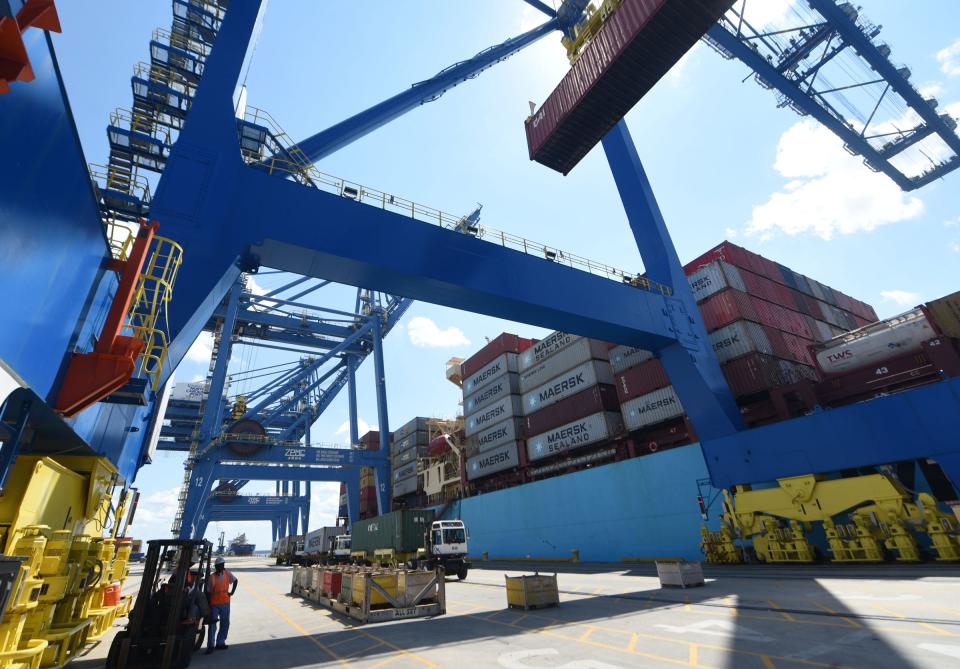As other Southeast ports get deeper, what's the status of Wilmington's expansion project?

In a rare showing of political bipartisanship in Raleigh, the state's 25% portion of the cost for the massive and expensive $846 million proposed infrastructure project has already been secured. And some of the biggest container vessels plying the U.S. East Coast already make stops in Wilmington − although they can't currently utilize their full potential when visiting the Port City.
Piece by piece, from the bigger ships and landside improvements needed to handle the increase in container traffic to the private sector adding more distribution and cold-storage space, the keys to keeping Wilmington a competitive port option as its neighbors dredge their shipping channels deeper are slowly falling into place.
But the biggest portion of the puzzle, deepening the Cape Fear River's shipping channel from 42 feet to 47 feet, remains a slow slog.
RISKY BETSPlan to assess risk of climate change on insurance, including in NC, courts controversy
From increasing concerns over climate change to navigating the halls of Washington to secure the necessary funding for the project's studies and then construction, plenty of hurdles remain before dredges can begin moving the estimated 26.9 millions of tons of sand and rock from the river bottom.
By design, the federal review and approval process is very deliberative, and that's OK with Brian Clark, who was been executive director of the N.C. State Ports Authority since 2020.
"Sure, we'd always like to see it move faster," he said. "But this is how multi-year projects like this, from inception to completion, work."
Competitive necessity
Despite some post-pandemic economic headwinds, North Carolina continues to grow, adding people and businesses at a strong clip − and port officials are eager to capitalize on the Tar Heel State's booming economy, highlighted recently by a surge in automotive and aviation projects in the Triangle and Triad areas.
Although a smallish-sized commercial operation compared to some of its Southeastern port peers, Wilmington has historically capitalized on its uncrowded status and ease of entry and exit to appeal to its customers.
"We have the capability to offer those services, from a quick turnaround and proximity to market to our lower costs, and we intend to continue to market that," Clark said.
But if the biggest ships can't easily access the port, a lot of the ease and financial sense of using Wilmington would disappear.

That has led to the ports investing $256 million in infrastructure improvement projects over the past five years, which included more huge container cranes, a new gate access, widened the port’s turning basin, and launching several new multi-modal rail routes. Now, port officials want to see the roughly 26-mile-long channel linking Wilmington to the Atlantic deepened to 47 feet.
"The container market looks strong and is likely to grow stronger, and the continuing cascade of larger vessels coming out of the shipyards over the next couple of years is very, very high," Clark said. "It is a critical competitive requirement that we have the necessary infrastructure to continue to be able to serve these larger vessels."
FUNDING THE FUTUREA $110M grant will help fund a new NC coastal bridge, but it isn't in Wilmington
The channel's last deepening project, completed in 2004 and with the federal government picking up roughly $280 million of the project's $400 million price tag, took the channel depth from 38 feet to 42 feet. The port has seen tremendous container growth since then, setting a record during the 2020-21 fiscal year with more than 324,000 TEUs (20-foot equivalent units, the standard measure for containers) handled. The number dipped to just under 300,000 in 2021-22, but is still nearly triple what it was two decades ago.
That number, however, is still just a fraction of the 5.9 million containers that flowed through Savannah's massive port in 2022. And the Georgia port, like the huge ports in Charleston, S.C., and Norfolk, Va., are already deeper than Wilmington. Charleston now offers a 52-foot draft, while Savannah is at 47 feet at low tide. Norfolk's channel, which also serves the largest Navy base in the world, is aiming to have 55 feet of depth by mid-decade.
Project study
In 2018 the ports authority funded a channel deepening feasibility study on its own. The study stated that while Wilmington with its 42-foot draft was relatively competitive with most East Coast ports, that situation wouldn't last long as neighboring ports got deeper.
A review by the Assistant Secretary of the Army for Civil Works, published in February 2020, raised several questions and concerns about the project. After signing a cost-sharing agreement with the port authority last fall, the corps is conducting "an evaluation of technical, policy and legal concerns" noted by the assistant secretary's review, said David Connolly, spokesperson with the Army Corps of Engineers' Wilmington District.

The corps-led $8.3 million review is expected to take roughly four years. If the deepening project is approved and federal funding secured and with an estimated four-year construction window, it could be around the end of the decade before the deeper shipping channel reaches the Port of Wilmington just south of the Cape Fear Memorial Bridge.
CLIMATE CHANGE Why flooding from hurricanes in the Wilmington area could get a whole lot worse
Climate change concerns
While the economics of going deeper seem clear, even if it comes with a hefty price tag, what about the environmental impacts of digging a deeper Cape Fear River shipping channel?
Kerri Allen, a coastal advocate and Southeastern regional manager for the N.C. Coastal Federation, the coast's largest environmental watchdog group, said a deeper channel handling bigger vessels will create a new set of environmental concerns − some of which have become a bigger worry since the first look at potential impacts was done several years ago.
"We're not necessarily opposed to the project," she said, noting the economic benefits the deepening project is forecast to have for the Wilmington area. "But it's a massive undertaking, so we want to make sure regulators have the right information, the right data and the right forecasts to make sure they're analyzing it with all of the best information available to them."
Impacts to the estuary's flora and fauna could be compounded by environmental changes tied to climate change, notably sea-level rise and what a deeper cut in the river could mean in allowing more salt water to push farther upstream, and in greater quantities. A deeper channel also could create new issues for Brunswick County beach towns near the mouth of the Cape Fear, which already blame the shipping channel for some of their beach and shoreline erosion woes.

"We just want to make sure this project makes sense, from both economic and environmental perspectives," Allen said.
Clark said the ports is prepared to address any questions raised by the study and looks forward to working with local officials and parties to mitigate their concerns.
"From a ports standpoint, we want to ensure we are a good neighbor," he said.
Reporter Gareth McGrath can be reached at GMcGrath@Gannett.com or @GarethMcGrathSN on Twitter. This story was produced with financial support from 1Earth Fund and the Prentice Foundation. The USA TODAY Network maintains full editorial control of the work.
This article originally appeared on Wilmington StarNews: Officials push forward with Wilmington Harbor deepening project

